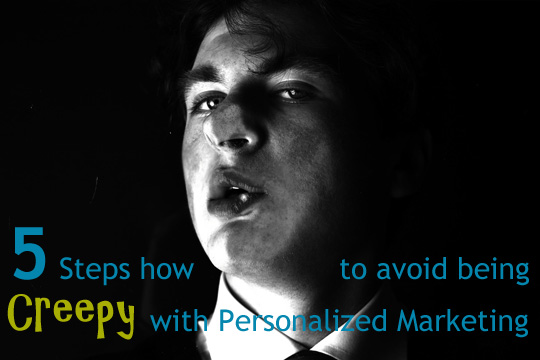With the fiercer competition nowadays, marketing professionals need to continuously seek innovative ways to engage their customers more. The goal should be making customers feel happy by valuing their unique preferences. However, it’s a challenge to manage personalized marketing without going overboard.
Don’t worry because, in this article, there are provided tips on how to create personalized content while delivering ultimate customer experience without sounding creepy. To make sure you are driving relevant campaigns to your target market, there will be comprehensive analysis to deeply understand the pros and cons of personalized marketing in any type of business.
What Is Personalized Marketing?
Personalized marketing, also known as one to one marketing, is basically the execution of a plan of action wherein businesses deliver personalized content to potential customers through an automation technology, data collection, and analysis. The objective of this marketing method is to involve prospective and existing customers by individually communicating with them.
Many online-based companies today are implementing levels of personalization in their campaigns. Offline, grocery stores offer loyalty cards to personalize the shopping experience. They also send coupons to their customers according to purchase histories. Personalized service is an essential element in local stores and small businesses, but large companies are also personalizing their business through database technologies.
Therefore, it’s important to understand the impacts of personalized marketing on various marketing campaigns. So, how do personalized marketing affect the type of marketing strategy you implement in your business?
- Internet marketing. To effectively make personalized recommendations, web pages need to display content that is according to customer history. As a matter of fact, your entire landing page should be designed like this. So when your customers arrive at your site, the geographic location, purchase history, and referral source can influence what’s displayed on your page.
- Direct mail & email. If you greet your customers by their first name, they tend to engage more with you than when you just say “Dear customer”. However, direct mailing is better than that. Integrating lead data into your mailings will help your offers or products get properly presented. This is easier with e-mails, but reducing variable printing cost is also good for physical mails. For instance, mailing lists that are generated from customer database can use the details about previous purchases in suggesting future ones. Database marketing which generated highly targeted mailing lists is useful in catering to the specific needs of customers.
- Business to business or B2B. Lead intelligence is gathered through the challenges faced by businesses. If not, you can contact decision-makers and agents to help you in framing pitches. In addition, searches on LinkedIn may determine mutual contacts which are helpful for future references.
- Social media marketing. In this type of marketing campaign, it allows you to communicate with customers via social media platforms. You can conveniently answer their questions online and engage them at the same time. Personalized interactions are beneficial to any business today. It seems tedious to reply customers one by one, but it will give a huge impact on your brand.
Many marketers today go overboard when trying to engage with their customers. But crossing the line could be creepy for some. So as a trusted brand, you need to consider using personal information correctly. Not all individuals are okay with brands that use their sensitive details. In fact, 68 percent of smartphone users in the US are concerned in making online activities that are tracked for targeted ads.
Ultimate Benefits of Personalized Marketing
There are so many benefits of using personalized marketing campaigns for consumers and brands. When done correctly, you can take advantage of the following:
- Enhance customer experience. Customers feel more confident in giving out their personal details to popular brands that they also trust. However, if you give them something valuable in exchange for their information, they will engage with you more. You can make them fill out a form, join podcast or customer satisfaction survey, download whitepaper, and point their special preferences or favorite purchases. So how is this helpful in your brand? With the use of customer information, consumers expect that you would protect their personal details and then give more personalized experience when they buy from you again.
- Increased revenue. If you can determine and respond to your customer’s preferred channel, you can effectively increase your ROI. However, you need to integrate the most efficient automation technology to determine which specific channels your customers are engaging with. Only then can you automatically follow them across these channels.
- Intensify customer loyalty. Brands need to understand that when customers give sensitive information, they need personalized treatment based on their specific preferences. You can make a competitive edge from competitors by dedicating your resources and time to execute effective marketing campaigns.
- Consistency across various social channels (Instagram, Facebook, Email). Nowadays, consumers are usually found online when looking for products or services they need. That being said, you need to be consistent in providing relevant content on the social networking sites that they usually participate in. You in-store customer experience should harmonize with your app.
What Are The Challenges of Personalized Marketing?
Like any other marketing strategies, brands also face challenges in personalized marketing. Below are the common challenges marketers usually encounter:
- Upgrading to new technology. One big problem in personalized marketing is upgrading from an outdated technology to an advanced system. Since the mobile age has been changing the way people buy goods, it’s important to keep up with the constant change. A successful personalization involves automation and data collection. Therefore, you need to understand the intelligent algorithms with the help of a personalization engine.
- Creating a single customer view. If you’re searching for some related threads in various channels, you will need to define who your customer is by gathering customer data and compile it in one customer profile.
- Implementing smart segmentation. When properly done, smart segmentation can boost your web performance. However, many marketers today are struggling to overcome the basics of segmentation strategies. According to studies, 85 percent of huge brands agree that their segmentation methods are based on simple clustering and broad segments.
- Crossing the line: Creepy Marketing. In marketing, personalization has become a hot topic. The feeling of consumers being watched makes personalized marketing creepy for some. Crossing that creepy line can cause brands to lose their customers. But when properly implemented, it could give you the ultimate advantage you need.
How To Avoid Creepy Personalized Marketing?
Here are the 5 basic steps to help you avoid getting creepy in your personalized marketing approach:
1. Collect data clearly. Let your customers know what specific data is collected from them. Follow the privacy laws before asking them to provide any sensitive information. To simplify this, you can create a banner at the bottom or top of your page to let your customers know you may use their purchasing behavior in order to improve customer experience.
2. Consider the limitations in data collection and usage. It’s not enough to tell your customers about how you collect or use their personal data. Brands have to be considerate in the privacy of consumers. One best way to assure them is to provide discounts in exchange for their information.
3. Do not use all data. If you use every data that you have in your marketing campaigns, it will only turn off customers. Too much personalization in your marketing strategies is also not good. For example, using their names in the email they get is okay, but seeing their names on your online ads can be creepy.
4. Personalize without using too sensitive details. You don’t need to identify your customers personally in order to personalize your marketing. If you can avoid the creepiness, expect better results.
5. Map out the entire content. Mapping out your marketing content to specific needs and interests can boost your sales without scaring potential customers away with too personalized ads. How? Identify what type of content is unique to your market. Feed the curiosity of each persona in order to create the most relevant content.
Examples Of Brands That Take It Too Far
Coca Cola – Coca Cola putting names on their bottles is fine, but planning to add surnames is already taking it too far. The company believes adding last names will give them the opportunity to attract more people to buy Coke products. Personalizing a product doesn’t have to be restrictive for your audience. Instead, it should be customized enough to impact on the right audience.
Amazon – When you visit the Amazon website, you will notice recommendations for you. That is because of the recommendation algorithm used by the website. However, knowing your customers so well may turn them off. So the best thing to do is to avoid being too manipulative of your customers’ buying decisions.
Spotify – This app uses an algorithm which can determine the taste of users based on their listening behavior. However, the results are not always favorable to the listeners. In fact, some users of the app find the songs in the recommended playlist off-putting. Brands need to accept the fact that personalization efforts might not always be effective in gaining more customers. Therefore, it’s important to use a conservative strategy to avoid pushing away customers.
Conclusion
The more advanced our technologies become, the more business opportunities we have. But when it comes to marketing, consumers appreciate less personalized content when looking for specific brands. Do not go overboard to avoid your brand from being tagged with a creepy label.
[Recommended reading: Social Media Marketing – A Comprehensive Guide To Success]
[Image credits – Main photo: Pixabay ; Burst, Nicole De Khors; other images or screen prints are from their respective websites and/or social platforms or articles]





